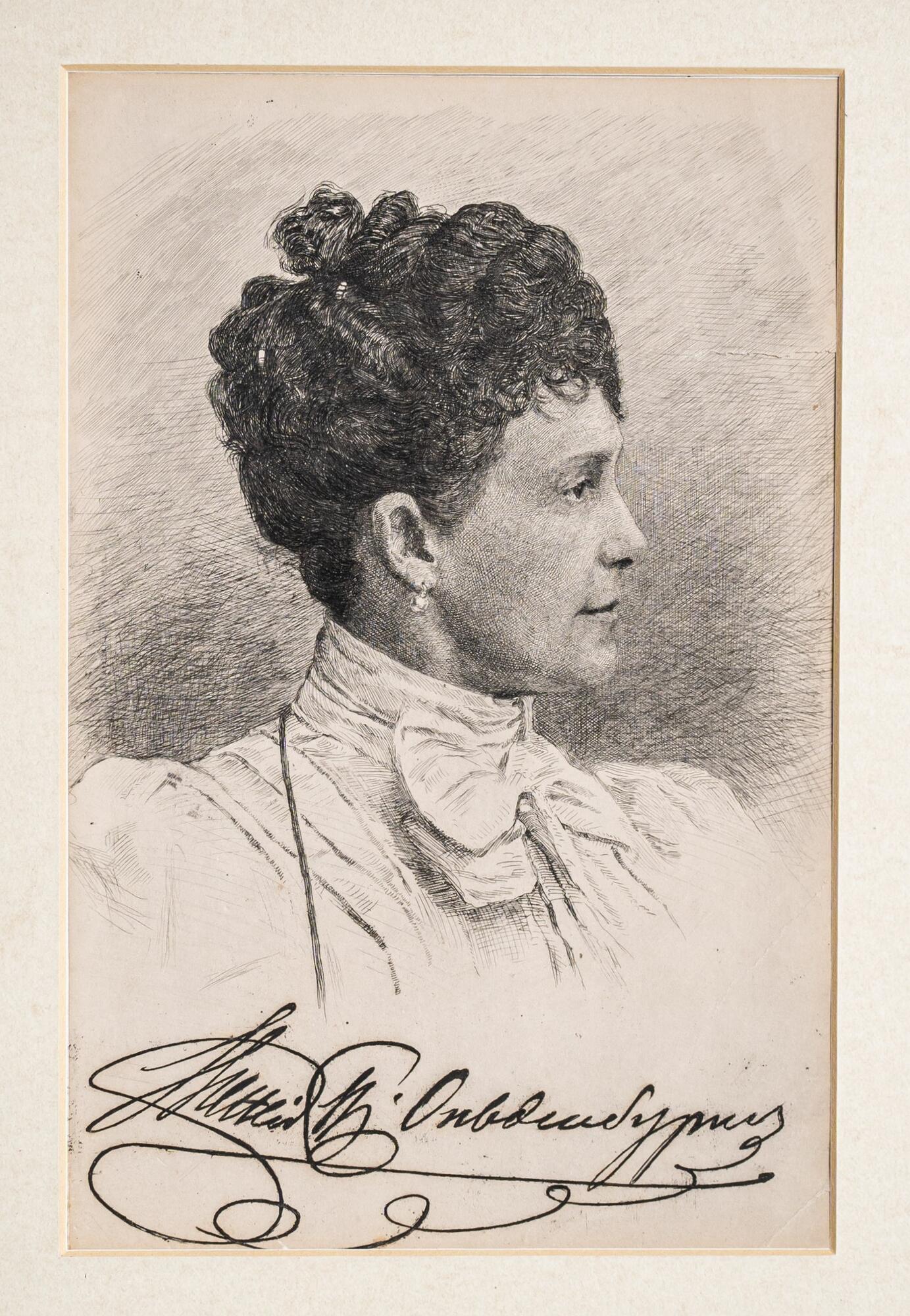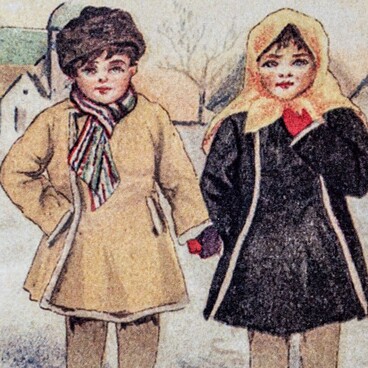The portrait by famous engraver Vasily Mate depicts Princess Eugenia of Oldenburg in profile. The classic features of her face, strong-willed chin, shining eyes are authentically conveyed. Mate sought to portray the princess as a benefactor and, at the same time, ‘the first businesswoman of the Russian imperial family’.
Eugenia Maksimilianovna was very active in social life. She was the patroness of the Red Cross Sisters' Committee, and the House of Mercy, the trustee of the Maximilian Hospital and the Christmas Women’s Gymnasium. For some time, Eugenia Maksimilianovna served as chairperson of the Imperial Society for the Encouragement of Arts. No less significant was her work to create a wide network of art schools in St. Petersburg and surrounding areas. At court, the Duchess of Oldenburg stood out sharply for her extravagance. She almost always wore a half-man’s outfit - a suit of light gray or beige. Eugenia Maksimilianovna was an honorary member of the Imperial Russian Automobile Society.
Vasily Mate received his art education first at the Drawing School under the Society for the Encouragement of Artists, and then at the engraving class of the St. Petersburg Academy of Arts, led by the famous engraver of that time, Fyodor Iordan. From 1880 to 1884, Mate improved his skills in Paris, with famous etcher Claude Ferdinand Gaillard and woodcutter Adolphe Pannemaker.
During his life, Mate made a huge number of reproduction sheets. There are 278 of them in etching alone, and 225 of them are portraits. He achieved the greatest success in the field of black and white woodcuts, imitating paintings and graphic originals.
Lithography, like engraving, is a kind of print - a print on paper from a printed matrix. Both options are widely used in art, but there is a fundamental technological difference between them. Art prints are created using relief matrices (boards), and lithographs are created using flat printing plates. Lithography as a way of reproducing images is based on the chemical process of etching a hard stone surface with acids. The artist draws the image on the printed form with a special tool - a lithographic pencil, ink or brush. Then the stone is treated with a solution of acids, which react with the dye residues in the drawn areas and form a thin layer of salt. Then the master removes excess acid from the mold with turpentine and applies printing ink to the stone. It stays on the surface of the stone in places with previously drawn images. This creates a blank for the future print. Printing is carried out under pressure on a special press machine.




